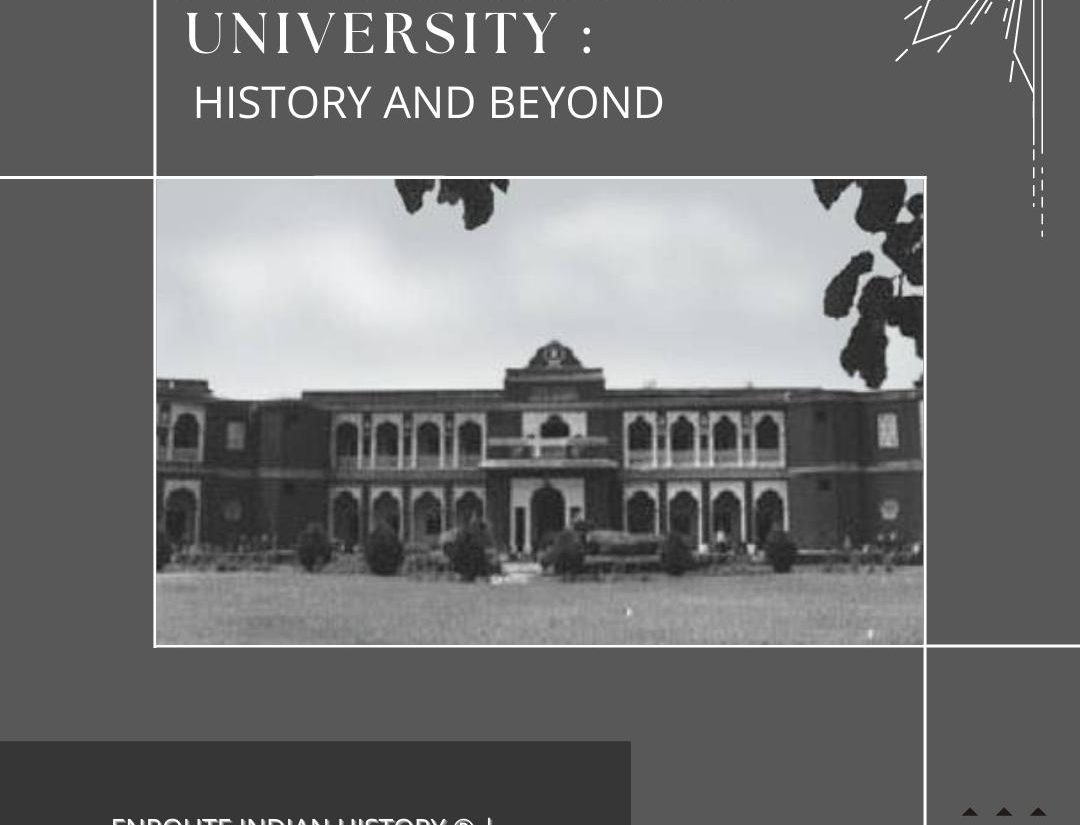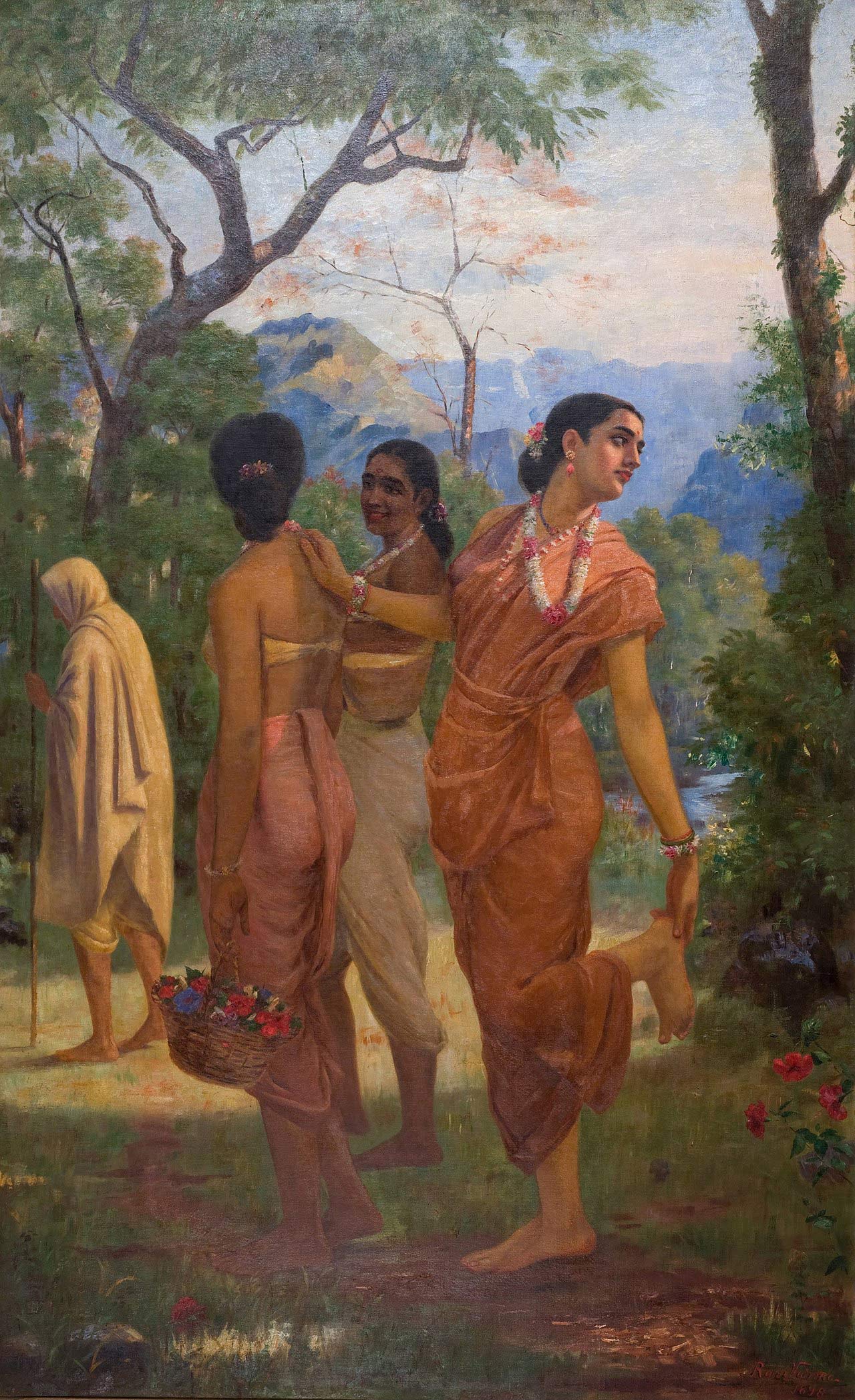
Article by EIH Researcher and Writer
Srushti Sharma
Ye mera chaman hai mera chaman, main apne chaman ka Bulbul huṅ
This is my garden- my own garden, and I am the ‘bulbul’( an Indian bird) of this garden
This is how the famous alumnus of the Aligarh Muslim University- Asrarul Haq Majaaz, a contemporary and dear friend of Faiz Ahmed Faiz, describes his alma matter in the AMU taranna that was penned down by him and continues to be sung by the students of AMU in contemporary times. Sir Syed Ahmad Khan, determined to refine the position of Muslims in India by emphasizing on higher education for the community, established Mohammad Anglo Oriental College in Aligarh in the year of 1871. The college later came to be known as Aligarh Muslim University, as directed in The Aligarh Muslim University Act of 1920: the act also gave AMU its constitution. The establishment of this prestigious institution led by Sir Syed Ahmad Khan was a part of the larger social reform movement that was in full swing in nineteenth century India and accentuated the importance of reason and rationality over traditions and superstitions. Though an unnecessarily communal statement, it is often being said that the social reform movement led to Hindu Renaissance in the community of Hindus and was responsible for the generation of the Aligarh Movement amidst the Muslims.
Sir Syed Ahmad Khan was highly inspired from the British mode of education and longed to establish an institution modeled on the structure of Oxford and Cambridge back at home. His desire to establish such an institution also stemmed from the anxieties arising out of the British policy to discontinue Persian as the language of courts and official works and replace the same with English. Unavailability of funds and stark opposition from the Muslim orthdoxy were two immediate barriers in the creation of AMU. There is a popular incident informing the memories of Aligarians that relates to the initial quests by Sir Syed. When Sir Syed was trying to collect funds for the creation of AMU, a shoe was thrown on him which he gracefully picked up, kept in the container meant for collecting funds and moved on while asking others for the funds. Such was the determination of this man who aimed to improve the condition of his community at the expense of personal humiliation.
The main purpose of this institution is to educate our countrymen; to dispel those illusory traditions of the past which have hindered our progress; to reconcile oriental learning with Western Literature and Science; to inspire in the dreamy minds of the people of the East the practical energy which belongs to the people of the West.
Sir Syed Ahmad Khan
Interestingly during its early years,Europeans contributed in significant proportions to the development of ‘culture’ at the Aligarh Muslim University. Henry George Impey Siddons, an Oxford graduate appointed as the headmaster of AMU in 1875, beared the harsh Indian summers to make AMU as credible as universities like Oxford. Principal Theodore Beck constituted Siddon’s Debating Club in 1884 while Walter Raleigh was responsible for the creation of Raleigh Literary Society, which is an active part of the English Department even today. Viceroy Lord Curzon donated a handsome amount for improving residence at the University. British officials attempted to enrich the social life of AMU students by forming various clubs for sports like cricket and football. Thus, AMU as we see it today is not only a center of historical learning but constitutes history itself- history of relentless struggles by innumerable people from different stratas to establish the institution in its full glory. Over the years, AMU became responsible for the rise of an educated class of Indian Muslims active in the economic and political life of the country. These included Sheikh Abdullah, Maulana Abul Kalam Azaad and Rafi Ahmed Kidwai amongst many other eminent alumni of the university in its incipient stages. Post-partition, AMU had to tackle several internal problems concerning corrupt management and communal disharmony which were efficiently managed by the then VC Dr. Zakir Husain.
The Department of History at Aligarh Muslim University is known for producing historians that dominate academic discourses of medieval Indian subcontinent and constitute what is known as the ‘Aligarh School of Thought’ that emphasises upon literal interpretation of Persian primary sources and disregards an absolute reliance on English translations of the same. Professor Mohammad Habib, KA Nizami, Irfan Habib( Padma Bhushan) and Satish Chandra are some of the historians who identify with this school of thought. Owing to the familiarity with Persian traditions, there are historical tales that are passed from generations of teachers to different batches of students. My history professor at the University of Delhi who identifies as a ‘thorough AMU patriot’ passionately speaks about such tales that she has inherited from her alma mater. Which secondary source will after all tell its readers about five women who made Sher Shah Suri or about the homosexual affairs of our very own court historian Badayuni or about the comparision that Humayun drew with the Shah of Iran when his nobles refused to give their horses to the preganant Hamida Banu? Furthermore, historians of AMU have played a crucial role in formulating the economic history of India. Shireen Moosvi, president of one of the sessions of Indian History Congress and Irfan Habib continue to hold immense authority in the field of Mughal economics. This, to some extent, is a testament to the successes of Sir Syed’s ambition to make AMU a place that will combine oriental learning with Western methods.
There is certainly a distinct aura attached to the University- an aura that author Huma Khalil describes as the one of ‘numayish, tehzeeb and riwayat’ in her coffee table book ‘Allure of Aligarh’. On formal occasions, one finds students and teachers gracefully adorning sherwanis and salwars and not shirts and suits and presenting their points not without urdu shayaris adding the charm of adab to their statements. Following parts of the article describe some tales and features of AMU that are unique to this historical institution and that makes AMU what it is.
Jama Masjid, AMU
Jama Masjid of AMU is the central mosque of the University and it is in Jama Masjid where Sir Syed himself was buried along with some eminent Europeans like Eric Arthur Horne, one of the erstwhile Pro Vice Chancellors of the University. There is an interesting and equally surprising history attached to the mosque. One of the queens of Shah Jahan, Akbarabadi, commissioned the construction of a mosque at Daryaganj during the same time when Taj Mahal was built. The calligraphy on this mosque was carried by Abdul Haq, the same architect who carried the calligraphy at the Taj Mahal. When the Daryaganj mosque was destroyed by the British post 1857 revolt, the pieces of calligraphy were saved by some and presented to Sir Syed, who identified the precious pieces of art and decided to use them in the Jama Masjid of AMU. It is believed by Professor Nadeem Ali Rezavi that the domes of Jama Masjid are the last of their kind. They were ‘true domes’, built using lime mortar and vousseurs. After the construction of these domes, the particular technology faded as did the empire of the great Mongols.
Tasveer Mahal, Marris Road and Musa Khan’s Sweet Shop
The landscape of every historical city is marked by a movie theater and bazaars accompanying the same. Delhi’s Rivoli is the perfect example to cite. Leisure is a feature of city life. Theaters are also forms of public entertainment- something that attempts at shaping collective identities of people. Tasveer Mahal evokes immense nostalgia amidst the alumni of AMU. Due to its proximity to the University, Tasveer Mahal, a theater at Aligarh became a common spot to hang out for the male students of the university. Historian Irfan Habib talks about the liberal culture of Aligarh in 50s-60s and how the establishment of Tasveer Mahal by Tufail Ahmed was an act of courage against the beliefs of conservative elements that used to frown upon the culture of cinema. Tasveer Mahal was also characterized by an inclusive culture- the tickets were cheap and people from all communities felt safe in the movie hall. The theater has been shut down now.In close vicinity to Tasveer Mahal lies Musa Khan’s shop that sells kaale jaamun, an Indian sweet. Watching movies and eating at this shop on summer evenings was highly enjoyed by the students of AMU. Marris Road used to connect the university to various other places in Aligarh. The doors of the Sheikh Abdullah Hall( women’ hostel of AMU) open at the Marris Road which became a reason for various Aligarians to travel through the road on a frequent basis and soon Marris Road became a popular dating spot.
Women’s Studies and Papa Miyan
Thakurdas, known as Sheikh Abdullah after his conversion to Islam, was the first one to propagate the idea of female education in his monthly magazine Khatoon started in 1904. His ideas were met with stark opposition not only from the Muslim orthdoxy but equally from the intelligentsia who feared that education in women will result in dissolution of purdah. With the help of Begum Sultan Jahan of Bhopal, Sheikh Abdullah established Aligarh Girls School in 1906 which later became a college. Initially, it was a sight in Aligarh to see elite Muslim women coming in their palanquins to AMU so as to get higher education. Considering the problems of transportation that women faced, Sheikh Abdullah soon hastened the process of making a women’s hostel, which is called Abdullah Hall today. The hostel has almost all facilities and it is a mini city in itself- from healthcare facilities to vegetable vendors, all sorts of requirements of female students are met in Abdullah Hall itself. Sheikh Abdullah was supported by his wife, Waheed Jahaan through and through in his struggles to ensure female education. Waheed Jahaan helped propagate the ideas of female education by delivering rational speeches and writing for Khatoon. Sheikh Abdullah is referred to as Papa Miyan by students of Abdullah Hall and is considered as a fatherly figure while Waheed Jahaan is called Ala Bi. One of the daughters of Papa Miyan, Khurshid Mirza, became popular by her screen name Renuka Devi and gave some Bollywood hits pre-partition. Her roles came to be widely regarded for their courageously sensuous undertones, something that was not accepted from women of those times.
Apart from these, AMU is known for innumerable other tales- the incident of Majaaz, Keats of Urdu Poetry, refusing to wear a ‘topi’ in one of the mushairas organized by the Student’s Union so that he can read the poetry by using the charm of his long hair and thus breaking the age-old tradition, the tale of teenager Ismat Chughtai audaciously asking the authorities of Abdullah Hall that if Papa Miyan is like our father why are we supposed to observe purdah in front of him or the anecdotes of the mischievous Masood ‘Tommy’ who drew several nukhtas( dots signifying a specific type of pronunciation in Urdu) in his notebook and quite funnily replied his teacher “Nukhtay hain. jahan jitni zarurat ho daal lijiye” (They are dots, use them as and where you want). One constant feature of Aligarh’s fiza( ambience) is the literary jewels it has produced- Majaaz, Akbar Allahbadi, Ismat Chughtai and Altaf Hussain Hali to name a few. Huma Khalil rightly describes the numaish of Aligarh by quoting Farhat Ehsas:
us se milne ki koi surat nikalti na thi
aur tabhi dil ke Aligarh ki numaish aa gayi
(There was no way to meet her that one could contrive
And just then hearts’s Aligarh’s numaish did arrive)
I would like to end the essay by presenting an excerpt from Maulana Abul Kalam Azad’s convocation speech at AMU:
The inscriptions that have been carved on the walls of your strachey hall may fade with the passage of time but the inscriptions which Aligarh has written on the modern period of Indian history can never fade. Future historians will discover in Aligarh one of the main sources which has contributed to the evolution of Modern India. Your duty is to regenerate those old traditions and to create in your university an atmosphere of research and inquiry into all the spheres of knowledge and preach the gospel of large hearted tolerance and of pure morality.
References:
Research Paper and Books:
Akhtar, S. (2016). Aligarh Muslim University: A Study of the Critical Period of Transition. Social Scientist, 44(7/8), 79–85.
A Woman of Substance: The Memoirs of Begum Khurshid Mirza, 1918-1989; By Begum Khurshid Mirza
Articles
https://indianexpress.com/article/opinion/how-amu-was-founded-6601504/
https://rekhtabooks.com/pages/allure-of-aligarh
https://indianexpress.com/article/research/the-europeans-who-made-aligarh-muslim-university-7124832/
Youtube Links
https://www.youtube.com/watch?v=IZ5OFhb_V84&ab_channel=DelhiKnowledgeTrack
AMU’S website links
https://www.amu.ac.in/about-us/history
https://www.amu.ac.in/halls/abdullah-hall
Alumni Blogs
https://www.heritagetimes.in/tales-of-two-historical-mosques-and-one-mission-education/




















